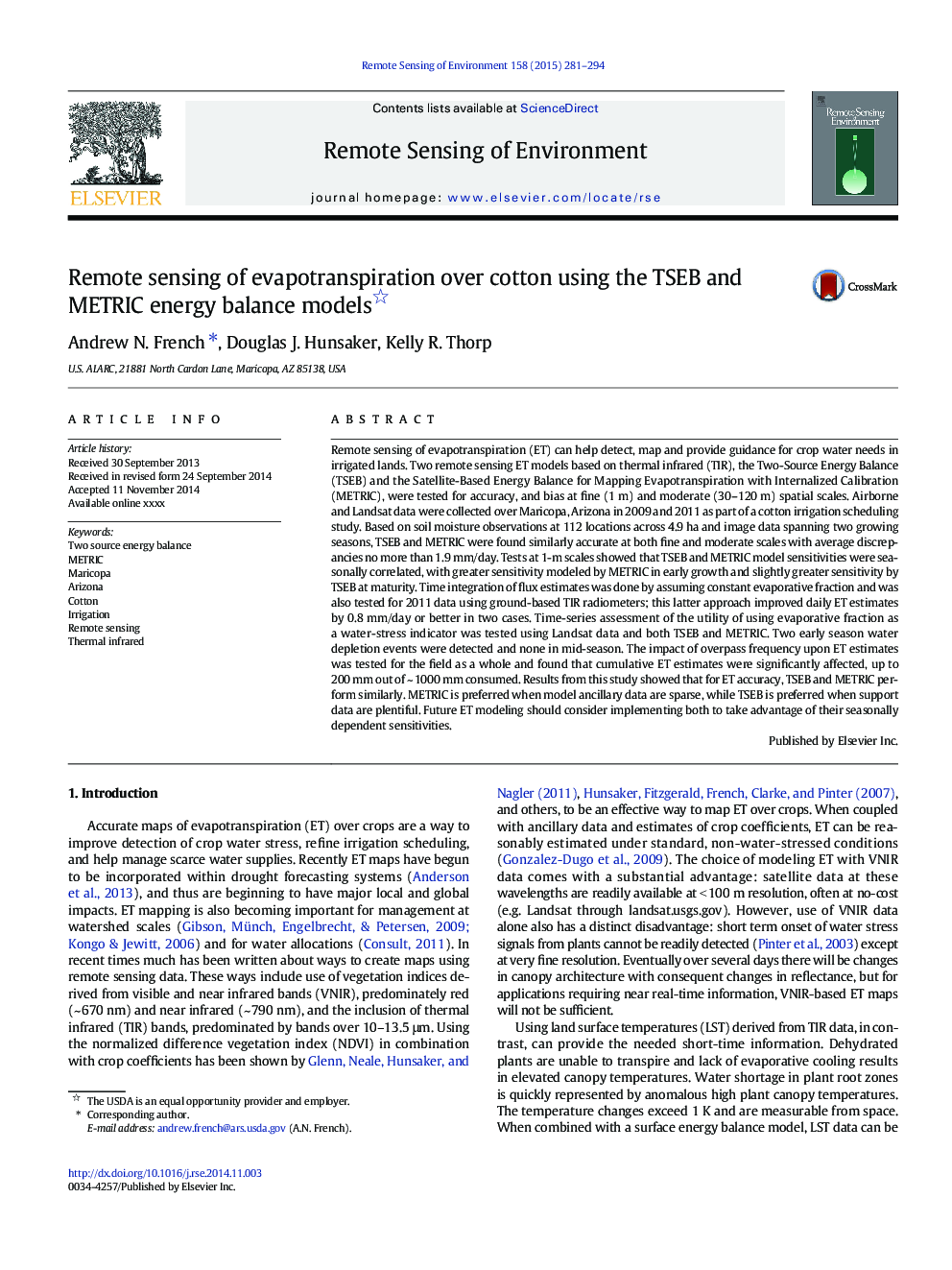| کد مقاله | کد نشریه | سال انتشار | مقاله انگلیسی | نسخه تمام متن |
|---|---|---|---|---|
| 6346252 | 1621242 | 2015 | 14 صفحه PDF | دانلود رایگان |
عنوان انگلیسی مقاله ISI
Remote sensing of evapotranspiration over cotton using the TSEB and METRIC energy balance models
دانلود مقاله + سفارش ترجمه
دانلود مقاله ISI انگلیسی
رایگان برای ایرانیان
کلمات کلیدی
موضوعات مرتبط
مهندسی و علوم پایه
علوم زمین و سیارات
کامپیوتر در علوم زمین
پیش نمایش صفحه اول مقاله

چکیده انگلیسی
Remote sensing of evapotranspiration (ET) can help detect, map and provide guidance for crop water needs in irrigated lands. Two remote sensing ET models based on thermal infrared (TIR), the Two-Source Energy Balance (TSEB) and the Satellite-Based Energy Balance for Mapping Evapotranspiration with Internalized Calibration (METRIC), were tested for accuracy, and bias at fine (1Â m) and moderate (30-120Â m) spatial scales. Airborne and Landsat data were collected over Maricopa, Arizona in 2009 and 2011 as part of a cotton irrigation scheduling study. Based on soil moisture observations at 112 locations across 4.9Â ha and image data spanning two growing seasons, TSEB and METRIC were found similarly accurate at both fine and moderate scales with average discrepancies no more than 1.9Â mm/day. Tests at 1-m scales showed that TSEB and METRIC model sensitivities were seasonally correlated, with greater sensitivity modeled by METRIC in early growth and slightly greater sensitivity by TSEB at maturity. Time integration of flux estimates was done by assuming constant evaporative fraction and was also tested for 2011 data using ground-based TIR radiometers; this latter approach improved daily ET estimates by 0.8Â mm/day or better in two cases. Time-series assessment of the utility of using evaporative fraction as a water-stress indicator was tested using Landsat data and both TSEB and METRIC. Two early season water depletion events were detected and none in mid-season. The impact of overpass frequency upon ET estimates was tested for the field as a whole and found that cumulative ET estimates were significantly affected, up to 200Â mm out of ~Â 1000Â mm consumed. Results from this study showed that for ET accuracy, TSEB and METRIC perform similarly. METRIC is preferred when model ancillary data are sparse, while TSEB is preferred when support data are plentiful. Future ET modeling should consider implementing both to take advantage of their seasonally dependent sensitivities.
ناشر
Database: Elsevier - ScienceDirect (ساینس دایرکت)
Journal: Remote Sensing of Environment - Volume 158, 1 March 2015, Pages 281-294
Journal: Remote Sensing of Environment - Volume 158, 1 March 2015, Pages 281-294
نویسندگان
Andrew N. French, Douglas J. Hunsaker, Kelly R. Thorp,